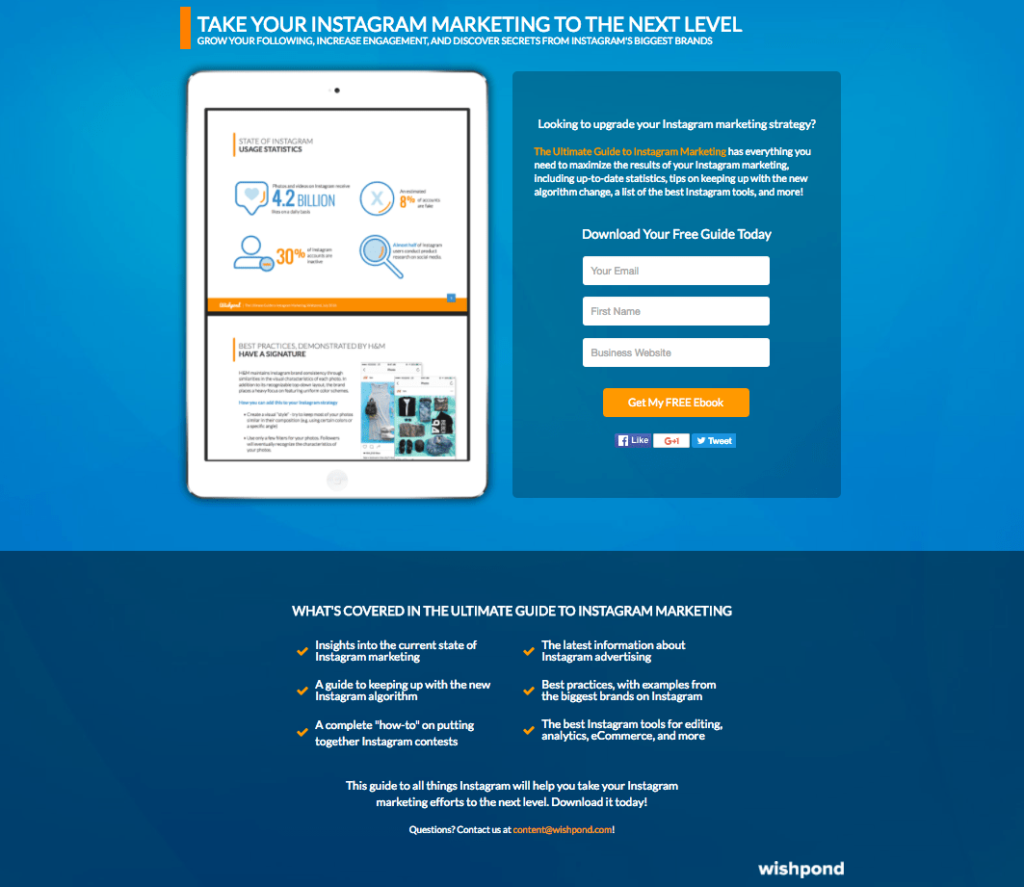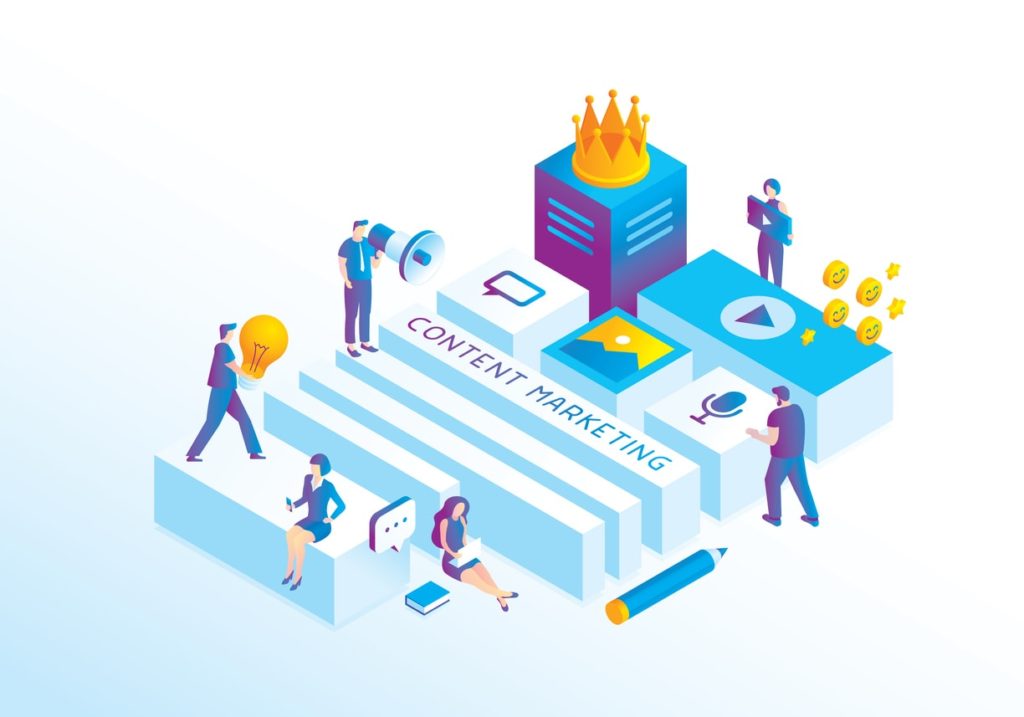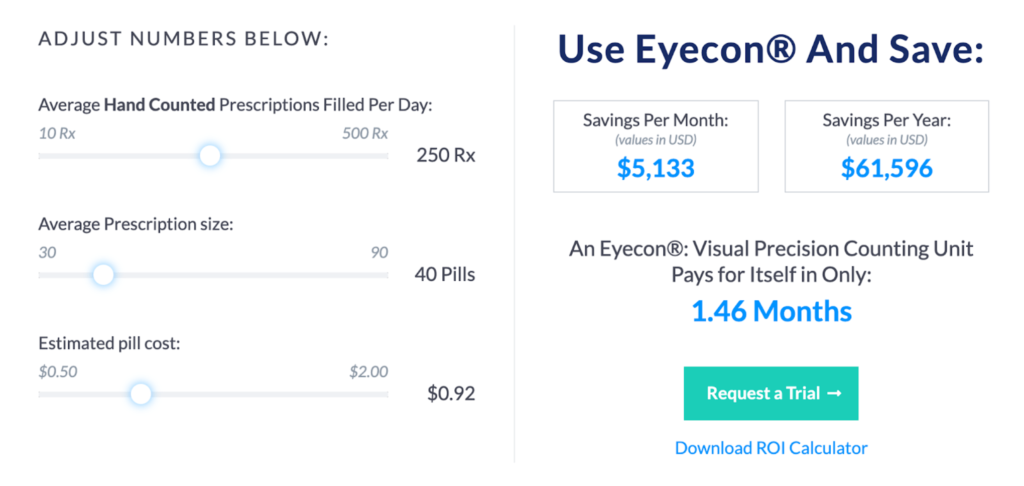Gated Content for B2B: To Gate or Not to Gate?

If you’re a B2B OE or OEM (original equipment manufacturer), and your products are specified by engineers or other technical decision-makers, it’s best to share your company’s detailed product information online. Without asking for an email address first. Especially data sheets or 3D models.
Yes, free content — where your prospects don’t have to give up their name, company and phone number — may go against the prevailing strategy of gating online content to get more soft leads.
Note — gating content is not an all or nothing practice. We’ll get into what to gate and what not to gate later.
But in this scenario, if an engineer wants to access your 3D model, chances are they’re already fairly pre-sold, and are likely looking at building your product into their prototypes. They’ll only want to talk to your sales team when they’re ready. However, if your 3D model is gated, and a competitors isn’t, guess which one gets built into their work?
Engineers are naturally curious, impatient and busy people who want information and data NOW to help them make decisions and build a case for your products. They won’t call or complete an inquiry form until they’re convinced your company can solve their problem, and they won’t want to talk to sales unless they’re convinced there will be an expert who can truly help them on the other side of the conversation.
If your website doesn’t have enough detailed information and technical specifications online to help them determine you can solve their problem, they’ll quickly move on to the next site that does. Comprehensive and rich content on your website will help drive more RFQs to your company. In fact, 70 percent of B2B buyers have already visited your website numerous times and have decided they may or may not want to work with you before they even contact your sales team.
Bottom line: never gate product or service information that relates to your core offerings, even detailed 3D models and specifications.
Content You Should Never Gate + Content to Gate
Ungated Content
As we noted above, don’t ever gate content or information about your company’s core offerings. This is content such as:
- Product and service information on web pages or within downloadable materials such as data sheets, 3d models, and sales brochures.
- Videos such as product demonstrations, animations, and company capabilities.
- Interactive tools that help visitors solve a relevant business problem.
- Infographics and data visualizations that educate prospects while encouraging them to use and share the content for other purposes (with a credit citation, of course).
- Thought leadership blog articles: These are well-written articles of 650 words or more that help you cultivate loyal readers with content that educates and broadens their perspectives on relevant topics. Through frequent articles you’ll create a library of timeless content that attracts viewers through organic search.
Gated Content Best Practices
In addition to your site’s general content, B2B companies should also offer visitors high-value thought leadership content. This is the type of content you’ll naturally want to give to prospects only if they share their contact information — name, company or email address, for instance.
Gated content is ideal for converting soft leads, collecting email addresses from prospects who are evaluating or researching their options, and others who aren’t ready to talk to sales.
But what sort of content is given in these rich content offers?
Focus on creating thought leadership and educational content. This content is directed at early-stage prospects and shouldn’t be promotional in tone. Content marketing expert and author Ann Handley directs us to “Share or solve, don’t shill.” Thought leadership content communicates valuable insights and establishes you as a resource for industry information, according to Business 2 Community. Don’t use it to plug your offerings. Over time, you’ll build up trust with prospects and earn a reputation as a leading source (get it?) of industry information. Some of them will eventually hire you; that’s icing on the cake, and a validation of this strategy.
B2B Content Marketing Top Forms of Gated Content
Let’s explore several forms of gated content in everyday use by B2B companies:
White Papers
B2B content marketing white papers are usually 1,000- to 4,000-word articles packaged into a two- to eight-page document or more. The copy is complemented with extensive illustrations, images and data visualizations to help tell the story. White papers are ideal for sharing deep knowledge, best practices and research that broadens the prospects’ understanding of technical topics. For example, manufacturing engineers and operations executives would be interested in learning about what’s new in the area of automation and robotics.
E-books
E-books are essentially longer form white papers — 2,000 words and more. E-books are typically organized into chapters or sections and may even include a Table of Contents and footnotes. Like white papers, e-books offer perspectives from multiple sources and industry experts, and augmented with charts, infographics, tables and compelling photographs.
Design your white papers and e-books in quickly scanned blocks of copy and colorful visuals. Focus on pithy, fact-based statements backed by research; stay clear of marketing fluff, vague assertions and superficial platitudes. For instance, instead of saying “automation helped make our business more efficient,” say “automation improved our production output by 47 percent the first year.”
Webinars
Webinars are a growing quality source of driving engagement with those who are not yet ready to buy. This platform is a chance for you to make an impression on early-stage or middle-stage prospects, and even introduce them to your sales reps or team members before they’re ready to buy.
By speaking directly to a large group, webinars give you the opportunity to showcase your knowledge, experience and passion for the business in such an authentic way, it can’t be replicated through website content or a long-form article.
Interactive, Online Tools
Technical people love tools — especially if they help them solve a problem. If the mathematical equations exist to support it, for example, we recommend creating an assessment or online tool that allows a technical buyer or engineer to put in a series of variables or yes/no answers to get an answer to the questions they’re looking for. This can reduce your cost of sale (less time creating proposals and entertaining unqualified buyers), and also provide a real value to your prospects.
Even if the tool doesn’t result in immediate business for you, it helps position you as an expert, and a likely candidate for future business when a prospect may have a more qualified need.
ROI calculator: We built an ROI calculator for a client that markets a pharmaceutical automation solution. The company’s prospects can use the calculator (without the gate) to help determine the payback period as well as annual net savings generated when using the company’s technology.
Prospects can immediately discover if the offering is feasible in their scenario, and if “yes,” provide their contact information for a more robust calculator download, or request a trial.
Other popular and effective interactive tools you can employ on your company’s website includes checklists, spreadsheets or process worksheets. You can offer these tools to prospects in exchange for a name, company and email address.
How to Promote Your Gated Content
Promote your gated offers judiciously throughout your website. Present your offer, for instance, after users scroll down your homepage, or on pages with content related to the offer.
You can also use carefully-curated PPC campaigns to promote a valuable content offer, linking users to a promotional landing page where they can immediately download the content after completing a simple form. It’s best to omit primary navigation from this page and send people directly to the form and offer. However, consider adding deep website links farther down the page to give visitors an alternative path.
Gated Content Best Practices; Other Considerations
As you create and design your gated-content offers, keep the following best practices and items in mind to improve program performance and outcomes.

- Present the contact form on the landing page: You’ll achieve best results when you ask prospects to complete the form if it’s on the landing page. Conversely, if you present them with a download button that takes them to a separate form page, you run the risk of annoying your prospect by adding another “click” to the process. The key: make the conversion process quick and easy.
- Leverage automated tools: Many marketing automation tools, WordPress plugins, and other plug-and-play devices have easy lead flow mechanisms to speed PDF downloads. If you don’t have access to these tools, however, you can set the thank you page for a form submission to show the content — or send a link in the thank you email.
- Is a PDF necessary? In some cases, we question the value of converting gated content into a PDF document. Especially, considering the added time and cost of formatting the content into print, which can also make it more cumbersome to read on a variety of devices.
- Is gated content indexed by Google? One drawback of gated content is it’s not indexable by search engines. Or that’s what we used to think. Through experimentation, HubSpot discovered a CSS technique that exposes content to search engines, but hides it from prospects until they pass through the gate. This tactic may not result in the most secure gate, but its benefits far outweigh the risks.
Yes, it’s Cliché, but Content IS King
In the digital marketing era of “content is king” it’s important that your website offers prospects and customers a wide spectrum of content from comprehensive product descriptions within easy-to-scan web pages to interactive tools to original long-form content that educates and positions your firm as a leader within your industry. You’ll build an audience, attract more prospects, generate more leads and ultimately grow your business faster.






